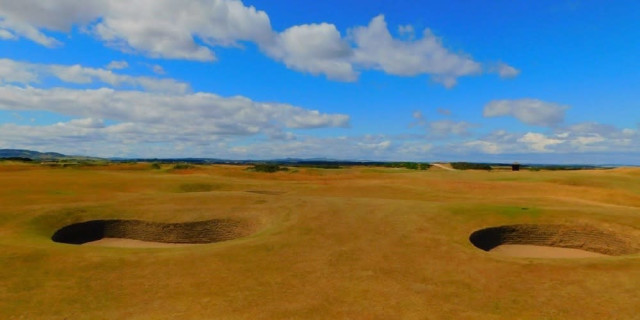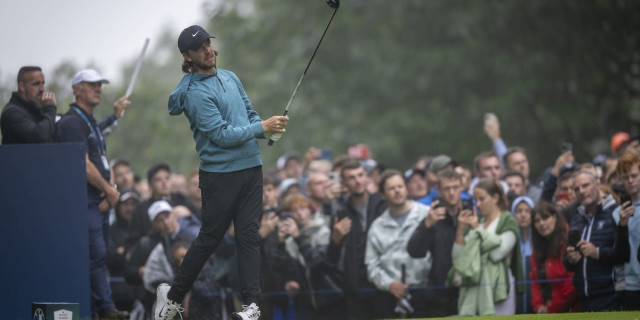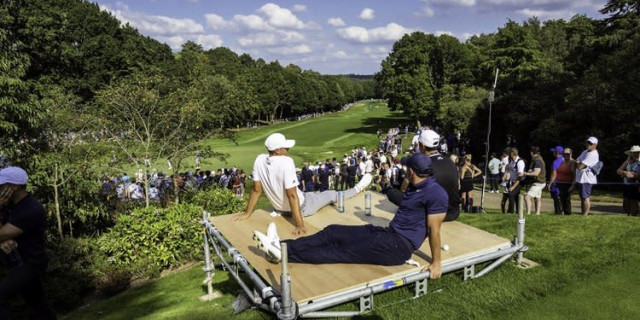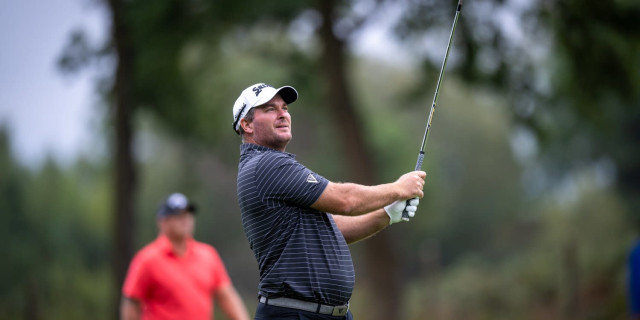
Ryder Cup Countdown: How GB&I Enjoyed a Rare Victory in 1957
THERE is huge anticipation ahead of this year’s Ryder Cup at Whistling Straits. Steve Stricker’s US team will begin the event as warm favourites as they attempt to reclaim the trophy. The event was, of course, cancelled last year because of the pandemic and with hopes that it will be played out in front of a capacity crowd there is certain to be a special atmosphere as the home seek seek to avenge the crushing defeat they suffered at Le Golf National in 2018.
As the countdown begins in earnest, we begin a series looking back at past Ryder Cups. In the coming weeks we will reflect on some of the Ryder Cup's most special moments, look at how it has changed and highlight the best - and worst - players and captains.
We begin by going back to Lindrick in 1957. Back then the contest was between GB&I and the United States. It was the 12th match and, to be frank, it was in the doldrums on account of the fact that, every two years, the USA would routinely thrash Great Britain and Ireland’s finest. Today the Ryder Cup is watched by hundreds of millions. In the 1950s, it lost money and with the US so dominant there was even talk of scrapping it until GB&I could field a side capable of giving the Americans a run for their money.
The GB&I captain at Lindrick was Welshman Dai Rees, who made his debut in the event in 1937.
The 1957 Ryder Cup was in danger of not taking place until Sheffield industrialist Sir Stuart Goodwin stepped in with a donation of £10,000 to the PGA. One of the criteria was that he was allowed to have a say in the venue chosen for the event.
The choice was Lindrick, just outside Worksop to the west of Sheffield. Largely the selection was made because of its proximity to Goodwin’s hometown, but it was also decided upon for strategic reasons. Most of the home side knew the Yorkshire course well, but the Americans did not. The plan was to have the fairways and greens firm and fast-running and to grow the rough at the back of the putting surfaces. The Americans, used to softer targets, would find themselves struggling to hold the greens.
Not that anybody thought it would actually make any difference. The USA had won the past seven Ryder Cups and, since the war, American players had won 35 of the 48 majors, compared to just three by golfers from Britain and Ireland. So confident were they of retaining the Cup that the US PGA renewed the insurance coverage on the trophy before the team had even left for Britain.
The American side was, however, missing a few star names. Sam Snead and Ben Hogan were not selected because they hadn’t participated in enough counting US PGA events over a two-year period; Jimmy Demaret, Cary Middlecoff and Julius Boros were omitted because they hadn’t played in the US PGA Championship. Demaret was outspoken in his criticism of the American selection process. “I could have picked a better team blindfolded,” he said.
Still, the squad that travelled looked strong enough. Doug Ford, Dick Mayer and Lionel Herbert were respective winners of the 1957 Masters, US Open and US PGA Championship and five of the seven others had been, or would be, major champions.
The British and Irish team contained just one major champion – Max Faulkner who had won The Open in 1951.
From the Ryder Cup’s inception in 1927 until 1959, its format was four 36-hole foursomes matches on day one, then eight 36-hole singles contests on day two. With two thirds of the points available in the singles, the match could be not be won or lost on day one.
US captain Jack Burke sent out what he believed to be his strongest pairing first – Masters champion Doug Ford and the on-form Dow Finsterwald. Rees also selected a formidable opening pairing in the shape of Peter Alliss and Bernard Hunt. The Englishmen had made their debuts in the 1953 Ryder Cup aged 22 and 23, but memories from that event were not good. Alliss had been one up with three to play in his singles match against Jim Turnesa, but he’d bogeyed the 16th, hit out-of-bounds on the 17th then missed a three-foot putt on the last for a half. Hunt had been one ahead of Dave Douglas on the 18th but then stumbled to a double bogey and halved the match. GB&I had lost overall by a single point.
Hunt and Alliss were seeking redemption. Unfortunately, it didn’t quite work out. The Americans started with three consecutive threes, went out in 32 and were four up through 15 holes. The young English pair fought back to limit the deficit to just one at lunch, but Ford and Finsterwald eventually lost won 2&1.
Rees backed himself in the second pairing with Ken Bousfield. His self-confidence proved well founded as he and Bousfield produced a solid performance to defeat Art Wall and Fred Hawkins by 3&2.
In match three, Faulkner teamed up with fellow Englishman Harry Weetman, who had won only one Ryder Cup match in three previous outings. He wouldn’t add to that total at Lindrick.
Facing Burke and Ted Kroll, neither of whom had enjoyed particularly successful seasons, the Britons were fancied to win. But, after a scrappy first round the Americans went to lunch one hole ahead. Both sides had played poorly over the first 18 holes and the general consensus amongst spectators and press was that the Englishmen would find their games in the afternoon and the yanks would crumble. Theopposite happened, Kroll and Burke raced to the turn in 33 and encountered only minimal resistance. The Americans cruised home 4&3 winners.
In the final foursomes contest, there was very little contest. Christy O’Connor and Eric Brown struggled and were thrashed 7&5 by Dick Mayer and Tommy Bolt.
GB&I were down by 3-1 after day one.
Rees dropped Max Faulkner and Harry Weetman from the singles. Faulkner played a pivotal supporting role on the final day, but Weetman was furious and said: “I will never play in a team captained by Rees again.” He would later be suspended.
The wind picked up on day two and the gustier conditions favoured the home players who were used to battling the breeze on the British and Irish links.
The putting surfaces were cut shorter for day two making them significantly quicker. The British and Irish seemed to realise this, but the Americans took some time to adapt. No fewer than six of the U.S. players three-putted the first green.
In the first singles match Tommy Bolt took on fiery Scotsman Eric Brown. In a hostile encounter, Bolt felt the partisan crowd overstepped the mark. “They cheered when I missed a putt and sat on their hands when I hit a good shot,” he said later.
When Brown took the win by 4&3 the pair did not shake hands. Afterwards Bolt told the press he hadn’t enjoyed the match before snapping a wedge in half in the locker room and refusing to attend the presentation.
Burke hadn’t intended to play the singles but when Ted Kroll fell ill, the American captain stepped in to take on Peter Mills in match two.
It was a one-sided affair with Burke playing some poor golf in the first round. The American limped in to lunch five down. Although Burke’s game improved in the afternoon, Mills held on to win the only Ryder Cup match he would ever play by 5&3.
In contrast to the lacklustre performance of the American captain, Rees put on a sparkling display against Ed Furgol. Storming through the first round, with a birdie at the 18th to go into lunch four ahead. Furgol, in his one and only Ryder Cup match, didn’t know what had hit him. The Welshman continued the onslaught in the afternoon and won 7&6.
Having played so well against Alliss and Hunt, Finsterwald was expected to cruise past Christy O’Connor. But, thanks to a new putter picked up in the pro-shop at lunch, the Irishman caught fire in the afternoon and scorched to a comprehensive victory.
There was also a convincing win for Hunt. The young Englishman thrashed Doug Ford by 6&5. Unfortunately, Alliss went down 2&1 to Fred Hawkins.
With only one singles point on the board for the Americans, Ken Bousfield had the chance to claim the winning point for GB&I against Herbert. The result of this one was never in doubt with Bousfield five up by lunch. Although Herbert refused to give in, he couldn’t deny Bousfield a 4&3 win. The Englishman tapped in a two-foot putt at the 33rd hole to secure the Ryder Cup for Great Britain and Ireland.
After Harry Bradshaw and Dick Mayer had played out an exciting half, GB&I had won the singles by 6.5 to 1.5 and the match overall by 7.5 to 4.5.
It was the worst singles performance by the Americans in the Ryder Cup. Rees described the victory as a, “shot in the arm for British and Irish golf,” but GB&I were beaten soundly in nine of the next 10 Ryder Cups with only a half in 1969.
Sadly, Rees died after a car crash in 1983.
36-hole foursomes:
Peter Alliss & Bernard Hunt lost to Ford & Dow Finsterwald by 2&1
Ken Bousfield & Dai Rees beat Art Wall & Fred Hawkins by 3&2
Max Faulkner & Harry Weetman lost to Ted Kroll & Jack Burke by 4&3
Christy O’Connor & Eric Brown lost to Dick Mayer & Tommy Bolt by 7&5
GB&I 1 – USA 3
36-hole singles:
Eric Brown beat Tommy Bolt by 4&3
Peter Mills beat Jack Burke by 5&3
Peter Alliss lost to Fred Hawkins by 2&1
Ken Bousfield beat Lionel Hebert by 4&3
Dai Rees beat Ed Furgol by 7&6
Bernard Hunt beat Doug Ford by 6&5
Christy O’Connor beat Dow Finsterwald by 7&6
Harry Bradshaw halved with Dick Mayer
GB&I 6.5 - USA 1.5
Final score: GB&I 7.5 USA 4.5
NEXT: We look back to the match in 1969 when Jack Nicklaus conceded a putt to Tony Jacklin on the final green to ensure the match finished all square.

The Ryder Cup is unlike any other tournament in golf and the atmosphere is something that every golf fan should experience. The experts at Golfbreaks.com can help with all aspects of your Ryder Cup experience, from accommodation and ticket packages to hospitality and travel and playing some of the fantastic nearby courses.
Tags: ryder cup PGA Tour european tour









